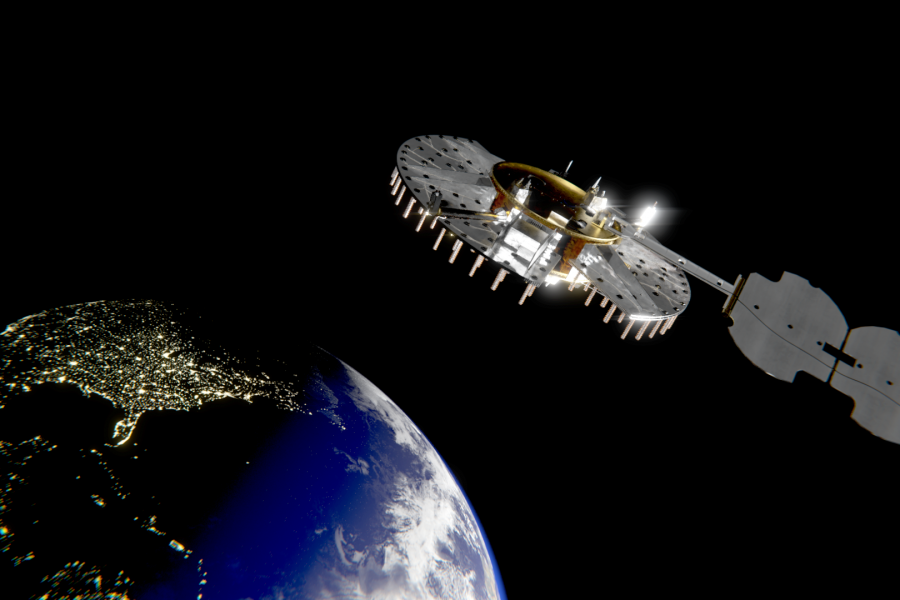Military researchers are eyeing multiple projects that could become the next Space Force “vanguard” programs, the high-profile ventures that receive extra money and attention from across the Department of the Air Force.
The “Precise” initiative and the Cislunar Highway Patrol System (CHPS), which were recently selected in an internal competition for more attention, are top candidates, said Col. Eric J. Felt, who runs the Air Force Research Laboratory’s space vehicles directorate.
The Precise experiment will be the lab’s first foray into very low Earth orbit, 200 to 300 kilometers above the planet, to study the ionosphere’s effects on satellites and other space assets. CHPS will evaluate how objects move in cislunar space and new ways to track them.
“Those are two examples of some good potential future space vanguards, but we’re not quite ready to nominate them yet,” Felt said. “They still have some homework to do on those, but there’s lots of examples in every mission area.”
More may emerge through avenues like the new WARTECH planning summit, which scopes out the most promising research projects for further investment.
Speaking to reporters Sept. 16 during the Air Force Association’s Air, Space & Cyber Conference, Felt said he’s found two concepts through WARTECH that could become vanguards, but did not provide details.
Other notable space experiments include the Space Solar Power Incremental Demonstrations and Research Project (SSPIDR), a joint effort with Northrop Grumman. It hopes to create a beaming system that could provide solar power to overseas bases using a receiving antenna on the ground, so installations don’t have to rely on vulnerable convoys and supply lines.
“SSPIDR is a collection of flight experiments designed to mature different critical technologies needed to build an operational solar power beaming system in space,” according to an AFRL fact sheet. “The SSPIDR project team examined the needs of the operational prototype and identified five critical technologies needing further development to make this system a reality. The technologies driving the effort are deployable structures, energy generation, thermal, radio frequency beaming, and metrology.”
Another is the Demonstration and Science Experiments (DSX) satellite effort, which is already part of the Space Force’s Space Test Program-2. DSX is studying space radiation that can damage spacecraft components, in order to design systems that last longer on orbit.
The Department of the Air Force will pick its next vanguards—or none at all—at a meeting of the Capability Development Council in January. Once work is underway, a new Transformational Capabilities Office will decide whether vanguards are good enough to grow into a formal procurement program.
Navigation Technology Satellite-3 is AFRL’s first space vanguard program, aiming to improve on the reliability and accuracy of location and timing data offered by the GPS enterprise. The first experimental satellite will launch in late fiscal 2022 for a yearlong test on orbit, and could expand to up to nine satellites.
The level of military investment in NTS-3 is more significant than L3Harris usually sees for similar research programs, said Joe Rolli, head of PNT business development at L3Harris, which is building the NTS-3 satellite. The Department of the Air Force wants $157.6 million for vanguards in fiscal 2021, including $24.6 million for NTS-3.
It’s one of the company’s first opportunities as the prime contractor on a leading space program rather than providing mission system software as a supplier.
The program is benefiting from being a higher priority from AFRL and working with more than the organizations at Kirtland Air Force Base, N.M., which hosts the Space Vehicles Directorate, NTS-3 Program Manager Arlen Biersgreen told Air Force Magazine Sept. 16. For example, the team is collaborating with the Air Force Life Cycle Management Center early on to get the program up and running faster, which wouldn’t be the case outside of a vanguard initiative.
Communicating with many different stakeholders across the Air Force and Space Force can be challenging, Biersgreen said, “but it also means there’s that much more visibility and that much more focus.”
“We have [SMC development experts] in meetings with us every single day, they participate in those major milestone reviews with L3Harris and the other contractors,” he said. “We also interact with the portfolio architects on the basis of the actual transition planning itself, and then we are interacting with the enterprise corps when it comes to launch and operations, and then the production corps … is what the [GPS system program office] itself has transitioned into.”
The biggest change from a typical research and development program is greater involvement with satellite operators, which is helping the Airmen who will use NTS-3 transition easily to the new system.
“We’ve seen in the major programs that if those things aren’t well coordinated, you’re not able to deliver capabilities on a tight and predictable timeframe to the warfighter,” Biersgreen said. “It’s absolutely been a value-added exercise via vanguard.”


